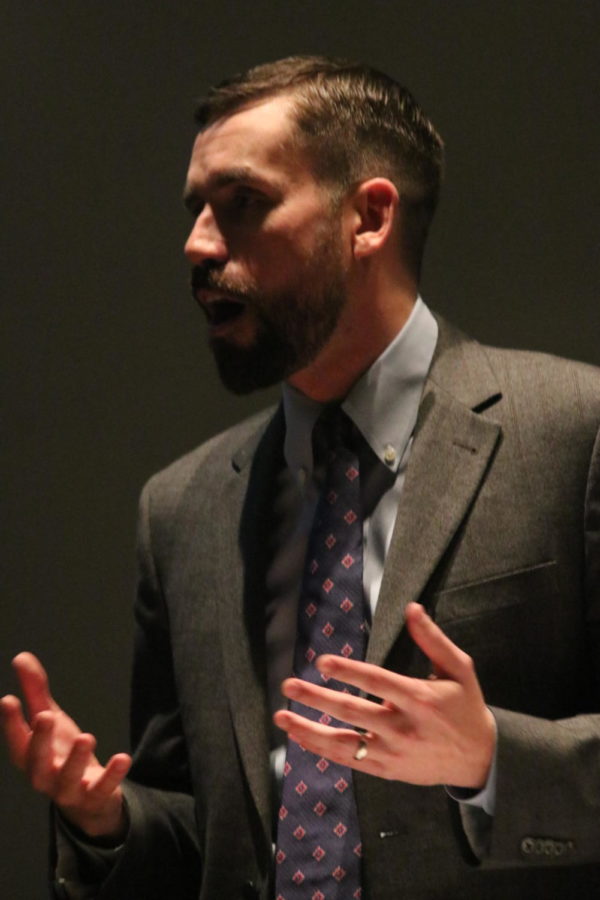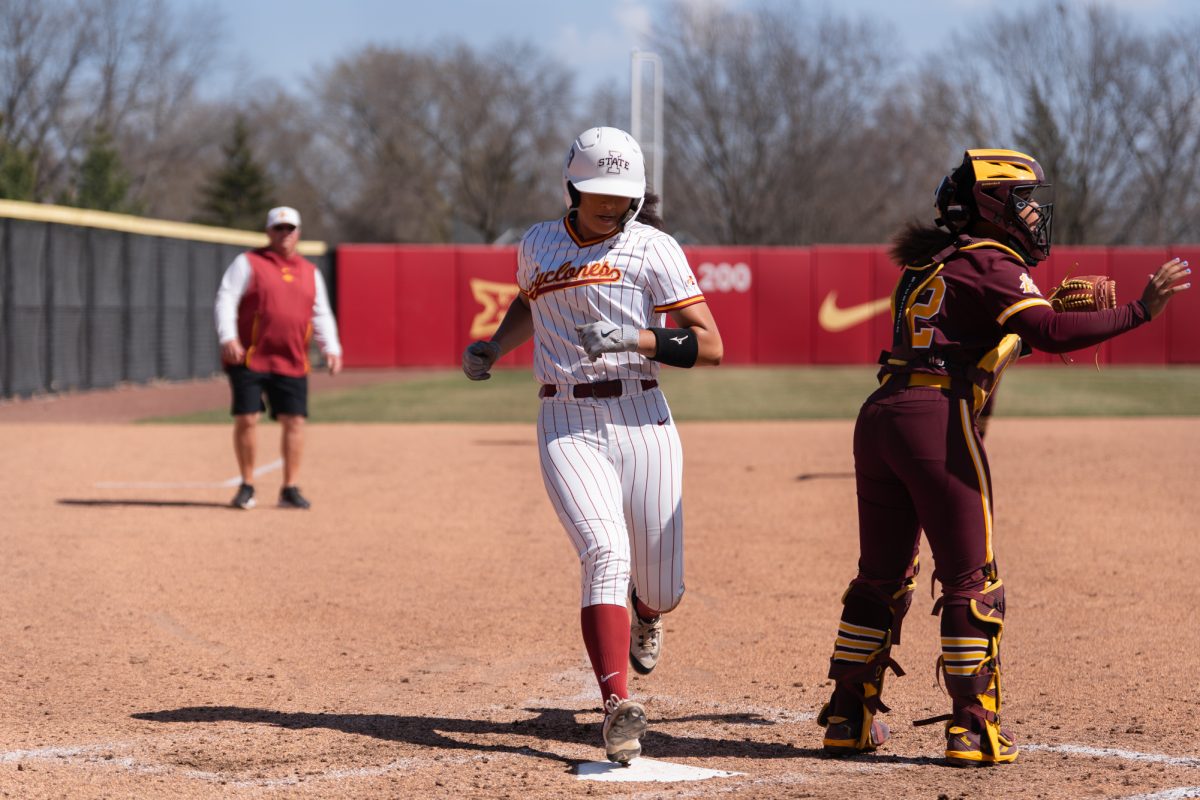The tale of an iceberg at Iowa State
Assistant Professor of History, Michael Christopher Low tells the story of “the Water Prince” and his dream to save the world through icebergs.
November 15, 2017
As the world still continues to search for more efficient ways to supply clean drinking water at an affordable and sustainable rate to all areas around the globe, Iowa State University Museums along with the Iowa State history department remember a remarkable time in both university and world history when the ‘Water Prince’ brought an iceberg to Ames, Iowa.
Collaborating with the Iowa State history department, Iowa State University Museums took students back to a time in Iowa State history when a Saudi prince and a one-ton iceberg made their way to Iowa State’s campus.
Michael Christopher Low, an assistant professor, lectured students and community members on the long history behind global water security and how it led former Prince of Saudi Arabia Mohammed bin Faisal to help fund a mission to bring an enormous iceberg to the middle of Iowa.
Having a long and diverse history in the desalination process of water as well as an extremely close relationship with the United States, bin Faisal resigned as governor of the Saline Water Conversion Corporation of Saudi Arabia in 1977 to devote himself full time to find out the logistics behind transporting a colossal Antarctic iceberg to Saudi Arabia.
While his countries population continued to rapidly grow due to the oil boom of the 1970s, he hoped this effort would help solve his countries problems when it came to getting freshwater for its citizens.
That is why after his resignation in 1977, Faisal created a firm called Iceberg Transport International. Shortly following the creation of the firm, Faisal began working with former Iowa State Professors Abdo Husseiny along with his wife Professor Zara Sabri.
Husseiny, who was a former Egyptian nuclear engineer that specialized in nuclear reactions that converted seawater to freshwater, obtained a grant from the National Science Foundation for $25,000 to help create the first ever International Conference on Iceberg Utilization.
Having also donated $50,000 to the success of the conference, Faisal was getting a little closer to finding an answer to his countries water problems. Faisal and Husseiny then began a quest to find a chunk of ice big enough to run tests as well as to gain the public eye.
After much searching, the group agreed to take a one-ton chunk of ice from the portage Glacier which lies about 50 miles south of Anchorage, Alaska. They then hired a team of scuba divers as well as a helicopter crew to extract the ice from the rest of the glacier.
Once the drivers were done separating the iceberg from the glacier a helicopter then airlifted it to Anchorage International Airport where it was cut into smaller sections of ice, insulated, and then shipped to Minneapolis, Minnesota. From Minneapolis it was loaded onto refrigerated trucks which carried the iceberg over 250 miles to Iowa State’s Memorial Union.
The estimated 10,000 year old iceberg then remained frozen in the Memorial Union until the conference.
Although Faisal’s hopes for making Saudi Arabia’s water problems disappear from the transportation of Antarctic sea ice didn’t pan out. The lecture also shined light on the current energy problems we face when desalinating saltwater.
With new initiatives and studies still being done today in countries like the United Arab Emirates on the possibilities of towing icebergs to the Middle East, there is still a possibility this won’t be the last time an iceberg is brought to Ames, Iowa.







